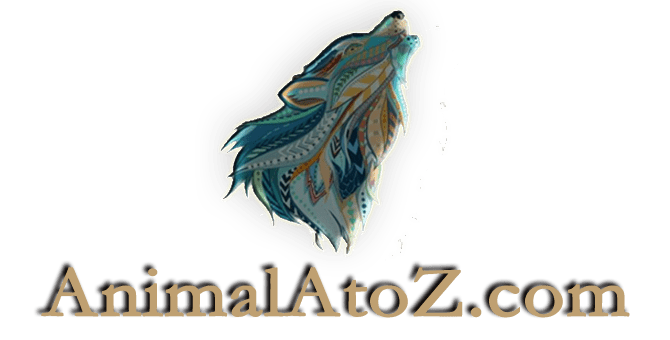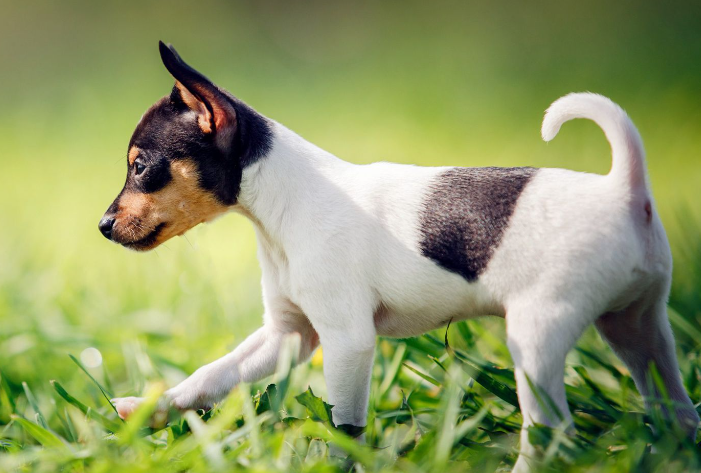The Saarloos Wolfdog is a fascinating breed resulting from the crossbreeding of a German Shepherd with a Eurasian gray wolf. Despite their wolf ancestry, Saarloos Wolfdogs have gained popularity as companion animals and can be excellent pets for individuals, families, and experienced dog owners.
These dogs exhibit both physical traits and behaviors reminiscent of their wolf heritage, yet they also possess loving and affectionate characteristics. However, due to their unique background and specific needs, they are not recommended for first-time dog owners. The Saarloos Wolfdog is a large and active breed with significant care requirements, making them best suited for owners who have a deep understanding of their needs and behaviors.
- Origin: The Netherlands
- Height: Male: 65 cm, Female: 60 cm
- Weight: Males 65 – 75 cm, Females 60 – 70 cm
- Size:: Large
- Lifespan: 10 to 12 years
- Colors: Black, Black, and Tan Blue, Silver, White
Breed Characteristics
Retaining many of the instincts inherited from their wolf ancestors, the Saarloos Wolfdog exhibits pack intelligence and thrives in the company of other dogs. With heightened senses compared to typical domesticated canines, they are exceptionally sensitive animals.
Described by their owners as “demanding,” the Saarloos Wolfdog is certainly not suitable for novice dog owners and should not be considered a family pet for inexperienced young families. Owners must invest time in building a strong relationship with the Saarloos Wolfdog and ensuring they understand their place in the pack hierarchy.
Intelligent and curious by nature, they require ample mental and physical stimulation to prevent boredom and maintain contentment. Despite assumptions that Saarloos Wolfdogs make formidable guard dogs, they tend to exhibit fearfulness rather than aggression when stressed and are unlikely to engage in protective behavior.
While they may be wary of unfamiliar people and guests, Saarloos Wolfdogs typically prefer to avoid confrontations and may attempt to flee the situation rather than resort to aggression.
| Adaptability: 3 Point | Apartment Friendly: 2Point |
| Barking Tendencies: 3Point | Cat Friendly: 3Point |
| Child Friendly: 3Point | Dog Friendly: 3Point |
| Exercise Needs: 5Point | Grooming: 2Point |
| Health Issues: 2Point | Intelligence: 3Point |
| Playfulness: 3Point | Shedding Level: 3Point |
| Stranger Friendly: 2Point | Trainability: 3Point |
| Watchdog Ability: 5Point |

History of Saarloos wolfdog
The Saarloos Wolfdog originated from the breeding experiments conducted by Mr. Leendert Saarloos, who crossed a male German Shepherd Dog with a female wolf. Beginning in the 1920s, Saarloos extensively experimented with crossbreeding various species, ultimately leading to the development of this unique breed.
In 1935, Dutch breeder Leendert Saarloos began crossbreeding a male German Shepherd with either a female Mackenzie Valley wolf or a female European wolf obtained from Diergaarde Blijdorp, the Rotterdam Zoo.
Recognizing Saarloos’ dedication and efforts, the Dutch Kennel Club officially recognized the breed and named it the Saarloos Wolfdog. Subsequently, in 1981, the Federation Cynologique Internationale also honored the breed, and in 2006, it received recognition from the United Kennel Club.
Today, the Saarloos Wolfdog is recognized throughout Europe by the Fédération Cynologique Internationale (FCI), solidifying its status as a distinct and recognized breed.
Appearance
As previously noted, the Saarloos Wolfdog bears a striking resemblance to its wolf ancestors. It is a medium to large breed with a wedge-shaped head and a long muzzle. Their almond-shaped eyes, often amber in color, contribute to their wolf-like appearance, complemented by medium-sized triangular ears set atop their head.
In terms of body proportions, Saarloos Wolfdogs are slightly longer than they are tall. Typically, they stand between 24 to 30 inches tall at the shoulder and weigh between 70 to 90 pounds when fully matured.
Temperament
The Saarloos Wolfdog is characterized by its energetic, independent, and intelligent nature, often forming strong bonds with its owners. This breed is known for its loyalty and devotion to its family. While they can be somewhat reserved, especially around strangers, they are not predisposed to aggression or conflict.
Due to their strong-willed nature, the Saarloos Wolfdog can be quite discerning and may present challenges even for the most experienced dog owners.
Personality of Saarloos wolfdog
In terms of personality, Saarloos Wolfdogs exhibit attentiveness and vigilance, often displaying skittishness around strangers and a cautious approach to new experiences. They are lively animals, known for their remarkable dependability and loyalty to their family members.
With a natural inclination for play, Saarloos Wolfdogs require outlets for their excess energy, making regular exercise essential for their well-being. While they can be very affectionate towards their immediate family, they typically maintain a reserved demeanor around unfamiliar individuals.
Saarloos wolfdog health & problems
The Saarloos Wolfdog is a robust breed, yet it may be prone to various health issues. However, with proper diet, exercise, enrichment activities, and preventive care, your Saarloos Wolfdog can potentially enjoy a lifespan of 15 years or more.
Some health problems to be apprehensive of with the Saarloos watchdog are
- hipsterism Dysplasia
- Degenerative Myelopathy
- Pituitary Dwarfism Pattern
- Subaortic stenosis
- Eye problems similar as
- Progressive Retinal Atrophy( PRA)
- Retinal Dysplasia
- Juvenile Cataracts
Dental Health Check-up
Dental issues are among the most common health concerns in pets, affecting 80% of all dogs by the age of two. Unfortunately, Saarloos Wolfdogs are more susceptible to dental problems compared to other breeds. Therefore, regular dental health checks are crucial for your canine’s overall well-being.
Proper dental care is essential for Saarloos Wolfdog puppies from an early age. It’s vital to prioritize their dental health if you plan to adopt or bring home a puppy of this breed.
Incorporate teeth brushing into your dog’s daily routine at the same time each day to make it a seamless part of their training regimen. Instead of forcing your dog’s mouth open, gently introduce the toothbrush between their lips and teeth for effective cleaning.

Care
Best Food For
- ORIJEN Dog Original Recipe, 13lb, High-Protein Grain-Free Dry Dog Food, Packaging May Vary
- Hill’s Science Diet Senior Wet Dog Food, Adult 7+ Savory Stew Canned Dog Food, 12 Pack
- Blue Buffalo Wilderness High Protein, Natural Adult Wet Dog Food, 12.5-oz cans (Pack of 12)
- Senior Grain Free Dog Food
Feed Healthy food
Saarloos Wolfdogs are known for their high energy levels, necessitating a diet rich in quality ingredients with ample protein content. While they thrive on raw feeding, they can also do well on dry kibble diets.
Providing a nutritious diet is crucial for the overall well-being of your dog. Nowadays, there are numerous healthy food options available for canines, allowing you to select the best option suited to your dog’s needs. Ensuring a balanced and healthy diet is essential for proper canine health care.
Grooming
The Saarloos Wolfdog is known to shed quite a bit, but grooming requirements are fortunately minimal. It’s recommended to brush these dogs at least twice a week to maintain their coat cleanliness and remove any loose fur. Brushing frequency may need to be increased during shedding seasons.
Bathing should be kept to a minimum and only done when necessary, as frequent bathing can interfere with the natural oils in the dog’s fur. Trimming their nails as needed and brushing their teeth regularly are also important aspects of grooming. Daily tooth brushing can help prevent dental decay and issues.
Training
Jalopy training
Training your canine to use a crate may require some patience and effort, but it can prove beneficial in various situations. It’s important to understand that crate training is not cruel. Despite any misconceptions, breeders and veterinarians often recommend using a crate for your dog from a young age. A crate can be invaluable during house training or teaching your dog household rules, providing a safe and secure space for your four-legged friend.
Socialization
Socialization is crucial for this breed. Without adequate socialization, Saarloos Wolfdogs may become reserved and timid around strangers. However, a well-socialized Saarloos Wolfdog is a delight to its family. Properly socialized puppies of this breed are comfortable and confident in various environments, including around loud noises, different people, and other animals.
Obedience training
This training is fundamental and essential for any crossbreed, including the Saarloos Wolfdog. We employ three styles of exercise with your dog, all built upon a solid foundation in the core five obedience commands: come, sit, stay, heel, and down. These five commands are crucial for obedience training, as they form the basis for effective communication and control between you and your canine companion. Every dog should be proficient in these fundamental obedience commands to ensure proper training and behavior.
Behavioral training
Behavioral training is essential for every dog. As dog owners, we all need to undertake some form of behavioral training at some point. Behavioral training is beneficial for the overall well-being and care of the dog.
It’s important to address common behavioral issues such as barking and aggression when undertaking behavioral training for your puppy. By addressing and correcting these behavioral issues, you can ensure effective training and a well-behaved canine companion.
PuppyDog Training
Saarloos Wolfdogs are receptive to training and thrive on the individual attention they receive during training sessions. They have a playful nature and prefer shorter training sessions lasting 10 to 15 minutes at a time. It’s crucial to keep training sessions engaging and varied to prevent boredom and maintain their interest.
Exercise
The Saarloos Wolfdog is a highly active breed that needs sufficient daily exercise and mental stimulation. In addition to physical activity, they require toys and activities that engage their intelligence and challenge their problem-solving skills.
Below are some stylish canine exercise options you can consider:
Interactive Puzzle Toys: These toys require the dog to solve puzzles or manipulate objects to access treats, providing mental stimulation and keeping them engaged.
Agility Training: Set up an agility course in your backyard or visit a local agility facility to provide your Saarloos Wolfdog with physical and mental challenges.
Fetch and Retrieve Games: Playing fetch with a ball or frisbee can provide both physical exercise and mental stimulation as your dog focuses on retrieving the object.
Nose Work: Hide treats or toys around the house or yard and encourage your dog to use their sense of smell to find them, stimulating their natural hunting instincts.
Obedience Training: Regular training sessions focusing on obedience commands not only reinforce good behavior but also provide mental stimulation and strengthen the bond between you and your dog.
By incorporating these activities into your Saarloos Wolfdog’s routine, you can ensure they receive the exercise and mental stimulation they need to stay happy and healthy.
Effects to consider espousing a Saarloos wolfdog
still, you should know, If you’re seriously considering espousing a Saarloos wolfdog.
- Before you borrow a Saarloos canine, consider how important time your new family member will spend alone. Flashback, a puppy dog requires constant attention.
- Before you borrow a puppy dog, ask yourself if you can walk your canine several times throughout the day.
- You also have the advantage of knowing that your canine is physically suitable to “ hold it ” for several hours at a stretch.
- Ask anybody who has espoused an adult canine also after adopting an adult canine.
- still, consider fostering before committing, If you’re doubtful of whether the new canine you’ve chosen is right for your family and life.
Adoption Center
More Dog Breeds And Further Research
FAQ
Saarloos wolfdog Puppy price
The Saarloos wolfdog Average puppy price is $800 – $1000 USD.
How much wolf is in the Saarloos wolfdog?
quarter wolf blood also bred the seed back with German Goatherds to decide on a canine with one-quarter wolf blood. The result was a canine that wasn’t useful as a working canine but as a companion that’s close to nature. The Dutch Kennel Club honored the strain in 1975. To recognize its creator, they named this canine the” Saarloos wolfdog”.
What do Saarloos Wolfdogs eat?
Saarloos Wolfdog Diet
The Saarloos Wolfdog should eat a high-quality canine food formulated for large breeds. However, you may want to consider an active working-strain formula, If he’s particularly active. Some say this canine should eat a substantial meat diet, but there does not feel to be general agreement on that.
What’s the rarest wolf?
The Ethiopian wolf is the world’s rarest canid and has a close relation to slate wolves and bootleggers that colonized the Horn of Africa through land islands. Ethiopian wolves are only set up on the mounds of Ethiopia and are Africa’s most hovered carnivores.
Can wolf dogs be left alone?
Wolves and tykes are interfertile, meaning they can breed and produce feasible seeds. In other words, wolves can interbreed with tykes, and their seed is able of producing seeds themselves.











